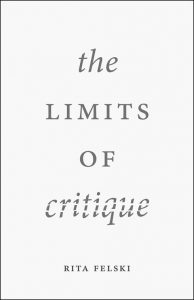Gary Lupyan and Rick Dale, ‘Why Are There Different Languages? The Role of Adaptation in Linguistic Diversity’, Trends in Cognitive Sciences, 20 (2016), 649-60.
The argument here is that linguistic diversity may result from the social, physical, and technological environments in which languages develop, rather than from gradual, random change. Acoustic adaptation to ecological niches is well known in animals, for example; maybe it works for humans too. Whistle languages can reach further across difficult terrain, whereas ‘a temperate climate with open vegetation allows for easier transmission of consonants and/or higher frequency sounds than warmer climates with denser vegetation, which better propagate vowels’. There is a correlation between humidity and the use of rising and falling pitch in languages; perhaps dry air affects the ability to perform those tones consistently. The difference could be genetic rather than, or as well as, climatic, they argue. It’s possible that landscape has an effect too: ‘languages spoken in environments with salient topography (mountains or large bodies of water) sometimes grammaticalize these geographic features for spatial deixis, while languages spoken in environments more strongly shaped by human artifacts tend to rely on reference to artifacts and speaker-centered coding (e.g., left and right)’. It’s a nice idea, that languages shape themselves around the things they have to address.
I found all of this quite intriguing. The comments on ‘how written language has been responding to the pressures imposed by modern electronic communication’ were reasonable too, but less engaging to me: it just seems less enlivening to observe this sort of adaptation as it’s happening during our stressed-out efforts to get things done, than to think about how over long millennia jungles, ice fields, deserts, and mountains impinged on local speakers. I wrote about something similar a while ago, in relation to Barry Lopez’s Arctic Dreams.
*
Sayuri Hayakawa, Albert Costa, Alice Foucart, and Boaz Keysar, ‘Using a Foreign Language Changes Our Choices’, Trends in Cognitive Sciences, 20 (2016), 791-3.
This (and the previous article, to some extent) makes me think, as I often do, of the particular, perhaps skewed way that interdisciplinary topics appear in the pages of Trends in Cognitive Sciences. This is about ‘how foreign language affects choice’; apparently it does, and this makes a difference to judgments of risk, morality, and more. The authors deem this ‘surprising’, but I am not sure it is. I suppose that’s because I have a broad, woolly sense that somewhere between history, sociology, anthropology, linguistics, and so on, there’s a field in which our understanding of how languages work on us is growing, or could grow.
In this essay, though, what matters are experimental results, and these are, the authors argue, gathering into a significant trend. Using a foreign language can reduce decision biases, such as loss aversion, perhaps because it is less bound up in emotions. In one study, subjects perceived more benefit and less risk; in another they were more lenient about taboo violations, in some cases; in another there were signs of more ‘utilitarian’ responses to ‘highly emotional moral dilemmas’. The authors say, interestingly, that the definition of what’s ‘emotional’, and how that varies between languages, is a tricky area. There’s something very interesting here; it feels bitty but the attempt to bring it together is valuable.
*
These things were on my mind this weekend because I went to see the film Arrival. Now this film is good enough for me to want to avoid revealing its secrets, even though that makes it rather hard to talk about. Suffice to say, it does interesting things with the structure of languages, the way our minds work, and the nature of time; and it has aliens in it. It is a film that, unlike most of the ones I’ve seen recently, works with a hyper-extreme .
It’s not breaking any confidences to say that the film, and the , revolve around the question of how you communicate with entities which are completely different from you. A few clicks of the mouse and I found myself reading about the ways in which designers of nuclear waste facilities are trying to send messages to people who would still be endangered by radiation if they visited the sites after tens of thousands of years.
*
The wonderful, horrifying problem is not just the difficulty of defining visual messages that would mean the same to future humans (or others). It’s also that the history of archaeology tends to suggest that, faced with such signs, people anything like us would think ‘Brilliant, I have found the treasure-filled tomb of my dreams! Indiana Jones!’. So it’s taking a lot of ingenuity (actually I am not sure it’s come to anything much yet).
The two sites I’ve read about are at Yucca Mountain in the US, which is discussed in this piece on the ‘Anthropocene’ era by my friend Robert Macfarlane, and at Olkiluoto, Finland, which featured in a documentary called Into Eternity. There’s some more detail on how the Americans thought about doing it in this Slate piece. I haven’t read it yet, but Gregory Benford’s Deep Time sounds like it has a lot to say on the matter of communicating across millennia in general.
As if my mind wasn’t full enough of words and thoughts and time, Youtube telepathically realised that I needed to know about the new OK Go video that has just come out. I’ve included one before and feel like I should do so again. Enjoy. Wonder whether it was all worth it. Decide it was.
